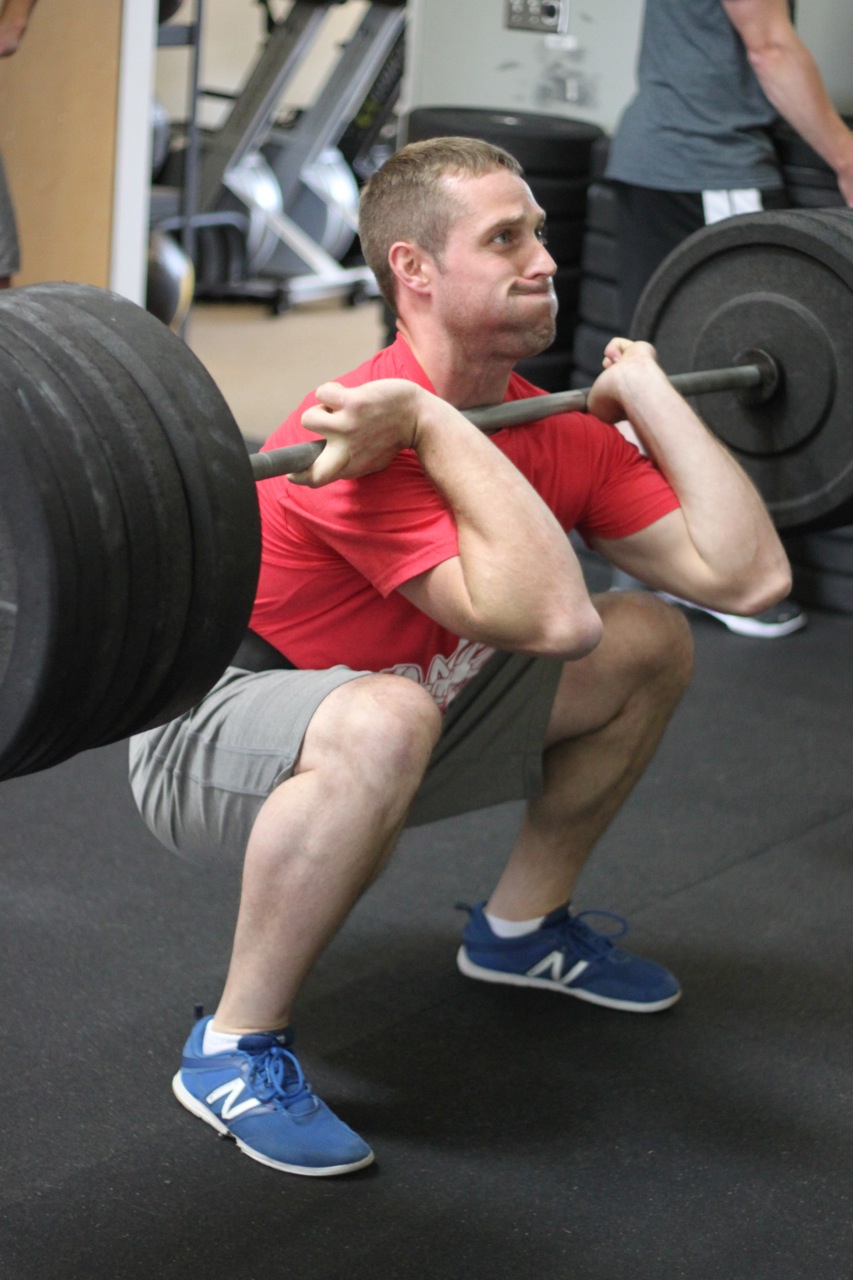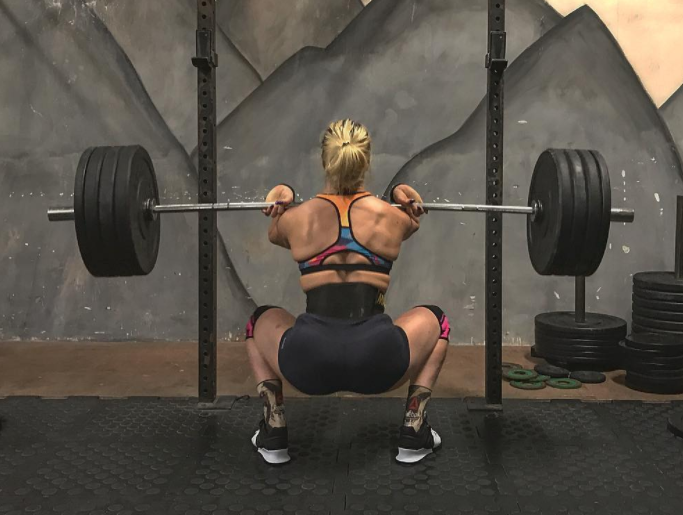

(Verbal cue: push the hips back only a bit) Slightly hip hinge to engage the posterior-chain.Create a rigid trunk by taking a big breath and holding it tight.Generate external rotation torque at the hips (Verbal cue: squeeze your glutes).

Position the bar securely on your chest and shoulders with your elbows high.Failing to cue both can lead to a rounded upper back and eventual injury. A good front squat requires both high elbows and an upright trunk. We also need to cue the athlete to drive their chest upwards. Often coaches will use the cue to keep the elbows up during the ascent. Often inexperienced athletes will let their back round during this portion of the lift. The ascent is all about driving with the hips and keeping the torso in a good upright position. Once we have established a stable bottom position it is time to begin the ascent. Video Commentary: This is a great example of front squat technique from German weightlifter Max Lang. The amount of backward movement will however be less than the back squat. This allows the body to remain in balance. By hinging the hips back slightly, the bar also remains over the mid-foot. This allows you to engage the powerhouse of your body (the glutes of the posterior chain). In order to perform a proper hip hinge during the front squat, the hips will only push back slightly. Stabilize your back by taking a breath “into the stomach” and bracing the core muscles. Next, squeeze the glutes in order to bring your knees into good alignment with the toes. Ensuring the feet are in a tripod position gives our body the stable platform it needs to move with good technique. Prior to initiating the descent of the squat, establish a proper foundation with your feet. Each athlete will have a slightly different stance width based on his or her individual anatomy and level of mobility. The feet may be pointed slightly outward and the stance should be at a comfortable width. Foot placement should mimic the same position used during the high-bar back squat. Set your feet in a comfortable and stable position.

With the bar secured properly on your shoulders, take three steps backwards in a slow and steady manner. This will keep harmful forces from being placed on your neck during the lift. Just like the high-bar back squat, the front squat will also use a straightforward or slightly upward eye gaze. Stabilizing the core with a big breath will allow you to lift massive weights without breaking in half. With this big breath and bracing technique, this can make the heavy weight feel lighter when the bar is on your chest. Extend your hips and knees at the same time (with even pressure between both legs) and stand up with the bar.įilling your lungs with air and bracing your core before you lift the barbell out of the rack is essential, especially when attempting to squat heavy weight. Take a big breath while bracing your core. Position yourself under the bar with your feet evenly spaced around shoulder width.


 0 kommentar(er)
0 kommentar(er)
